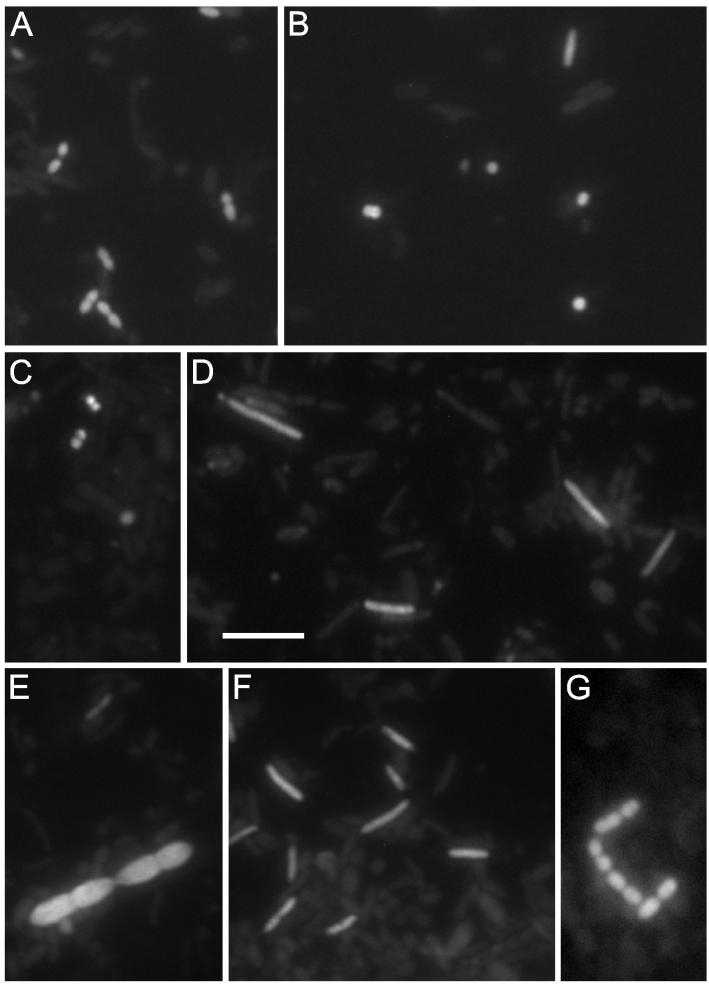FIG. 2.
FISH experiments with the newly designed probes on fecal samples from different volunteers. (A) Epifluorescent images of a hybridization with the Ecyl387 probe specific for the E. cylindroides group showing small fluorescent rods. (B) Hybridization with a combination of the Rbro729 and the Rfla730 probes specific for bacteria of the Ruminococcus group; the image shows one rod and different cocci. (C) Hybridization with the Veil223 probe specific for Veillonella showing small cocci. (D) Hybridization with the Phasco741 probe detecting rods of the Phascolarctobacterium group. (E and F) Two images of different fecal samples hybridized with the Lach571 probe specific for the Lachnospira group showing big oval dividing rods and one thin rod (E) or only thin rods (F). (G) Hybridization with the Ehal1469 probe showing rods of the E. hallii group. Bar, 5 μm.

